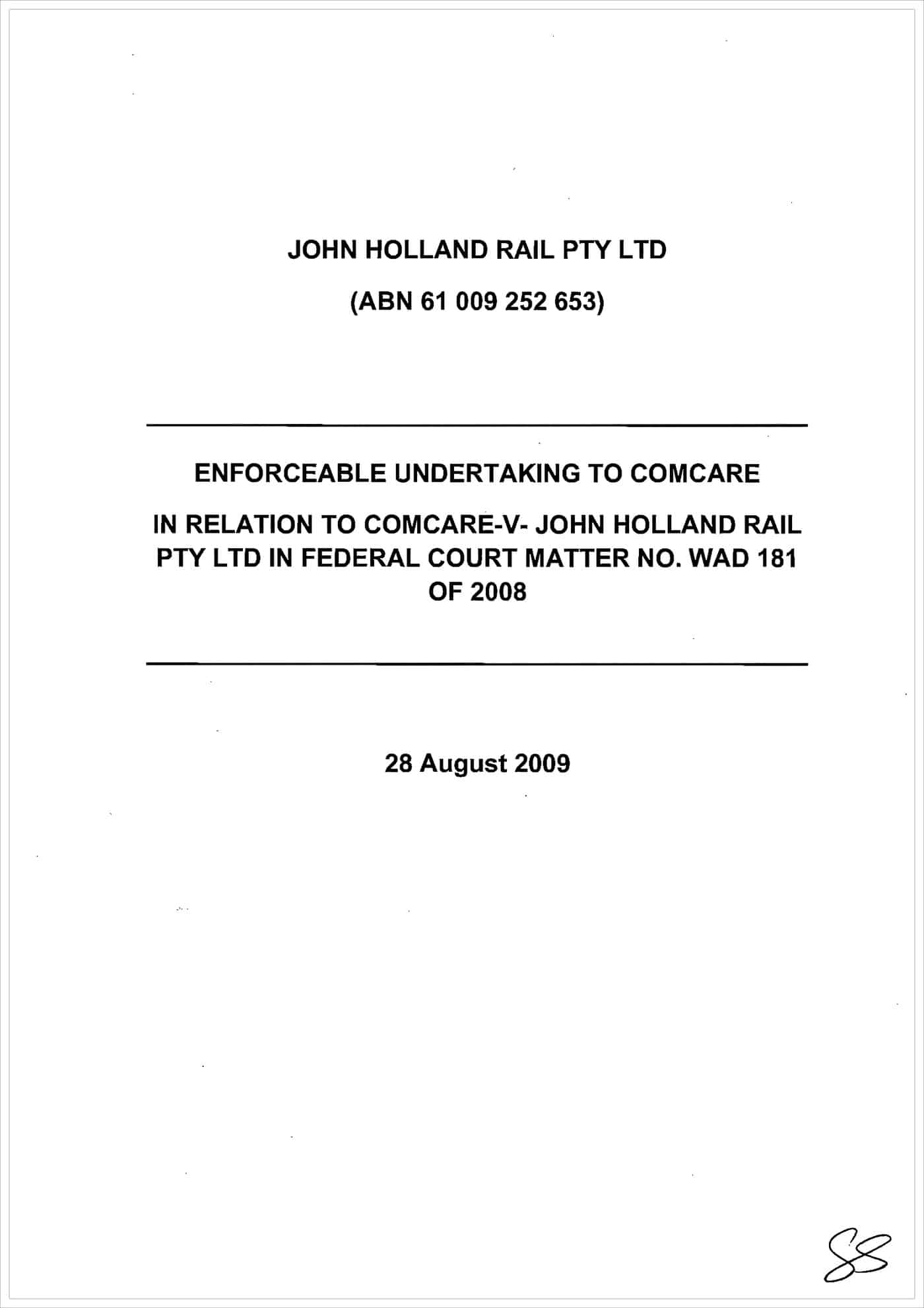Comcare has instigated a hefty list of enforceable undertakings (EU) against John Holland Rail (JHR) after a contractor, Jack Wilmot, needed a finger amputated after a workplace injury.
According to the report on the Comcare website
“…an apprentice boilermaker was involved in an incident which resulted in crush injuries to his left index finger at a JHR facility located at Kewdale, Western Australia.”
 Comcare’s investigation report
Comcare’s investigation report
“found that JHR failed to ensure the apprentice, had received adequate training, supervision and instructions in the task he was undertaking when injured.”
Stephen Sasse, Director of John Holland Rail, signed off on the enforceable undertaking at the end of August 2009.
Below are some of the mandatory safety improvements
- maintain the new supervisory structure implemented at the Kewdale facility shortly after the incident
- implement and adapt the safer systems of work across JHR workplaces within two months of signing the EU
- conduct a risk assessment of all major activities undertaken by JHR to determine and identify those which should be classified as ‘high risk activities’ (HRAs) within six months of signing the EU
- eliminate where reasonably practicable to do so, all HRAs and otherwise apply appropriate control measures to the balance of the HRAs, within six months of signing the EU
- provide training regarding safer systems of work to all JHR employees who undertake rail plant maintenance activities as part of their duties within eight months of signing the EU
- commence implementation of the Rail Safety Business Plan 2009 at all JHR workplaces by 31 September 2009 including commencing work on each of the 28 strategic initiatives within the stated timeframes.
Some of these tasks would be impossible to undertake from scratch. A response from John Holland Rail and/or John Holland Group is being sought.
Enforceable undertakings are a feature of financial and OHS legal processes. In Queensland and Victoria an EU is
“… a legal agreement in which a person or organisation undertakes to carry out specific activities to improve worker health and safety and deliver benefits to industry and the broader community.”
John Holland Group has been proud of its OHS record for many years and has had the benefit of Janet Holmes a Court as a safety champion within and outside the company. Holmes a Court spoke of her commitment to safety at the 2009 Safety In Action Conference which was hosted by the Safety Institute of Australia (SIA) of which John Holland is a Diamond Corporate Partner ($A25,000 minimum donation).
Only last week the SIA, proudly announced a Diamond Corporate Partnership with John Holland Group which commits the company to, amongst other commitments,
- “Act and work responsibly and competently at all times to improve health and safety in workplaces and ensure they do no harm.
- Give priority to the health, safety and welfare of employees, employers and other workplace health and safety stakeholders in accordance with accepted standards of moral and legal behaviour during the performance of their duties.
- Ensure the health, safety and welfare of employees, employers and other workplace health and safety stakeholders takes precedence over the professional member’s responsibility to sectional or private interests.
- Ensure work by people under their direction is competently performed and honestly and reliably reported.
- Ensure they do not engage in any illegal or improper practices.”
It is suggested that for next year’s Safety In Action Conference, the SIA asks a JHG representative to discuss the above enforceable undertakings as a case study of inadequate safety management and the related organisational and financial costs.
[Note: Kevin Jones was involved in the promotion of Safety In Action 2009]
